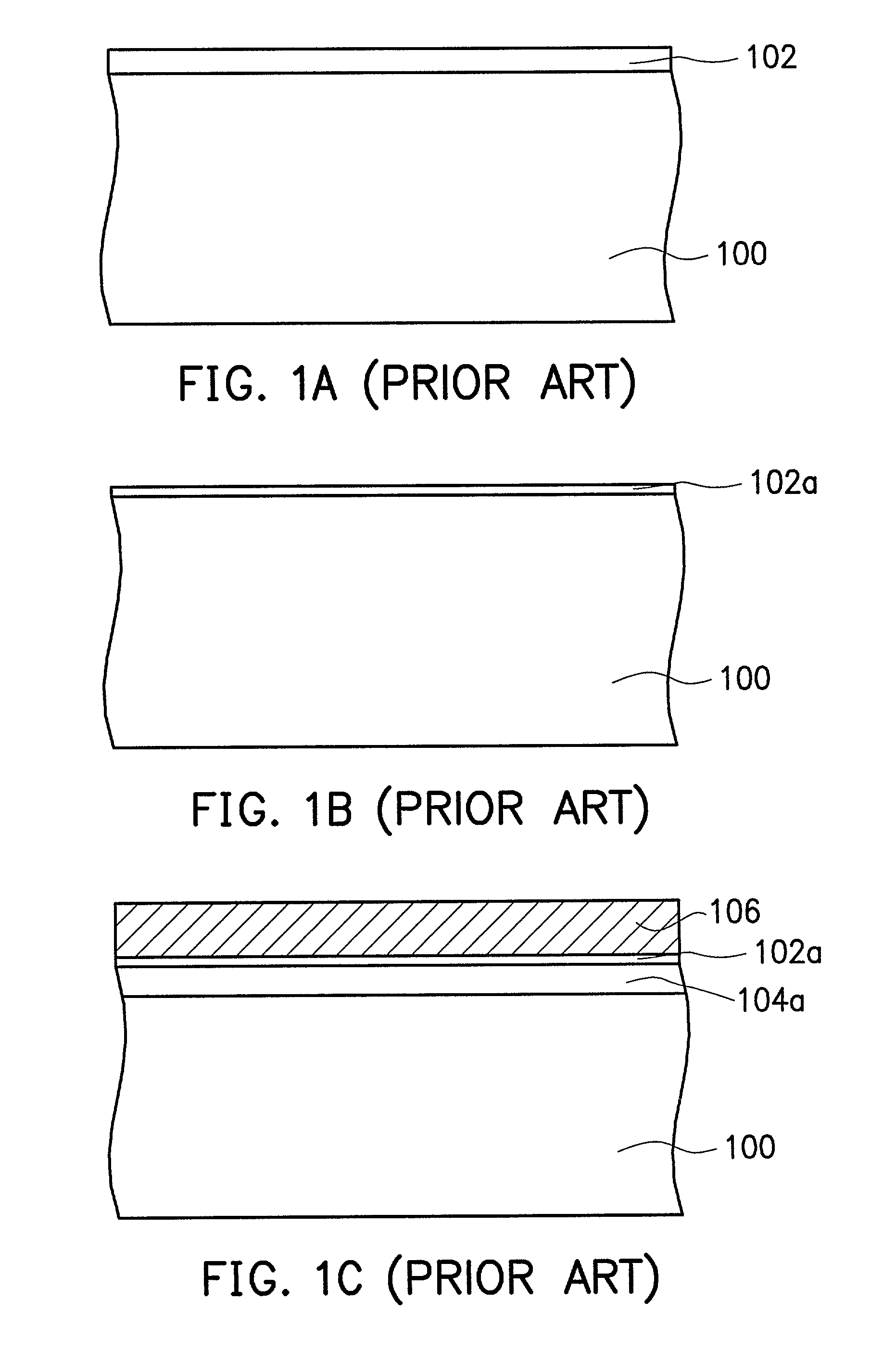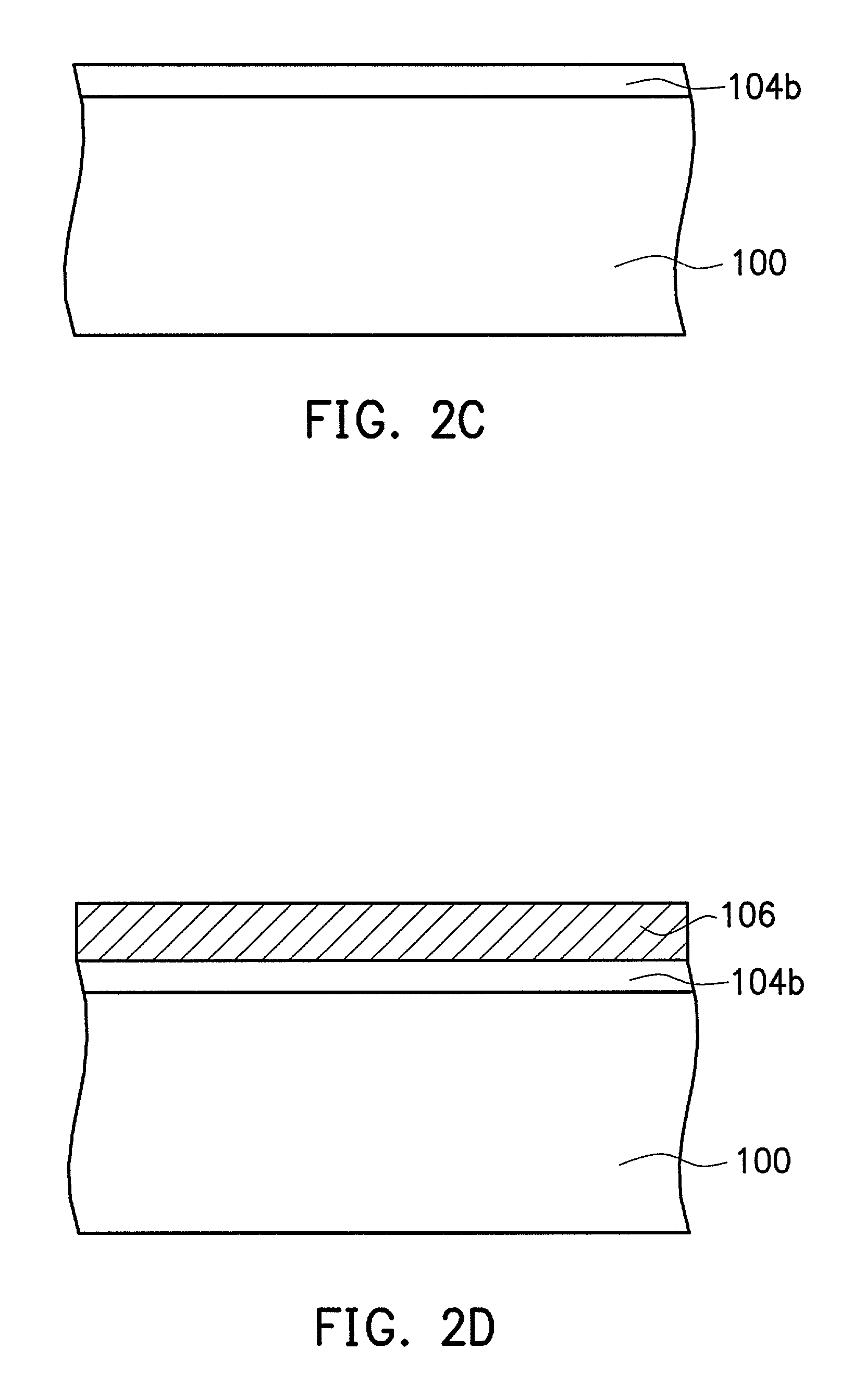Method of forming a gate oxide layer
- Summary
- Abstract
- Description
- Claims
- Application Information
AI Technical Summary
Benefits of technology
Problems solved by technology
Method used
Image
Examples
embodiment 1
[0013] FIGS. 1A-1C are schematic cross-sectional views showing a method of forming a gate oxide layer after deoxidizing a native oxide layer according to a first preferred embodiment of the invention.
[0014] Referring to FIG. 1A, a semiconductor substrate 100 is first rinsed so as to remove impurities and part of a native oxide layer (not shown) naturally formed thereon in an oxygen-containing atmosphere. After that, a native oxide layer 102 with a thickness of approximately 2-10.ANG. remains on the semiconductor substrate 100.
[0015] Referring to FIG. 1B, the semiconductor substrate 100 is sent into, for example, a furnace, which is supplied with a high-temperature hydrogen gas having a temperature of approximately 750-900.degree. C. and a flow of 0.5-5 sccm. With the high-temperature hydrogen gas, the native oxide layer 102 is partly deoxidized to form a remaining native oxide layer 102a, or even completely deoxidized.
[0016] Referring to FIG. 1C, a gate oxide layer 104a with a thick...
embodiment 2
[0017] FIGS. 2A-2D are schematic, cross-sectional views showing a method of forming a gate oxide layer before deoxidizing a native oxide layer according to a second preferred embodiment of the invention.
[0018] Referring to FIG. 2A, a semiconductor substrate 100 is first rinsed so as to remove impurities and part of a native oxide layer (not shown) naturally formed thereon in an oxygen-containing atmosphere. After that, a native oxide layer 102 with a thickness of approximately 2-10.ANG. remains on the semiconductor substrate 100.
[0019] Referring to FIG. 2B, a gate oxide layer 104b with a thickness of approximately 30.ANG. is formed between the substrate 100 and the native oxide layer 102 in, for example, a rapid thermal oxidation chamber, a furnace or the like.
[0020] Referring to FIG. 2C, the semiconductor substrate is sent into, for example, a furnace, which is supplied with a high-temperature hydrogen gas having a temperature of approximately 750-900.degree. C. and a flow of 0.5-5...
PUM
 Login to View More
Login to View More Abstract
Description
Claims
Application Information
 Login to View More
Login to View More - R&D
- Intellectual Property
- Life Sciences
- Materials
- Tech Scout
- Unparalleled Data Quality
- Higher Quality Content
- 60% Fewer Hallucinations
Browse by: Latest US Patents, China's latest patents, Technical Efficacy Thesaurus, Application Domain, Technology Topic, Popular Technical Reports.
© 2025 PatSnap. All rights reserved.Legal|Privacy policy|Modern Slavery Act Transparency Statement|Sitemap|About US| Contact US: help@patsnap.com



